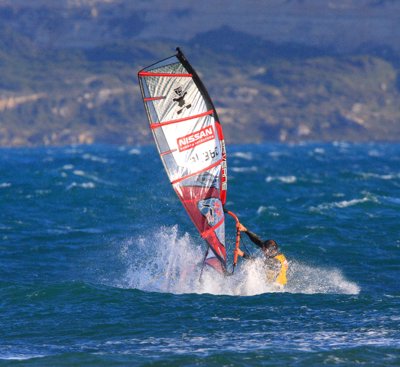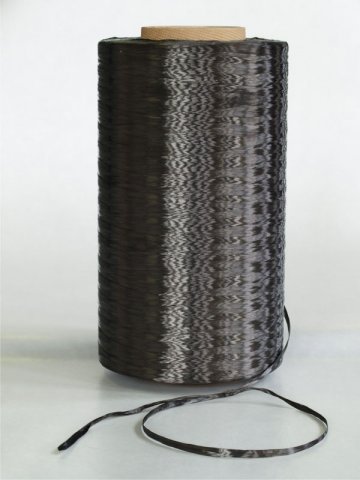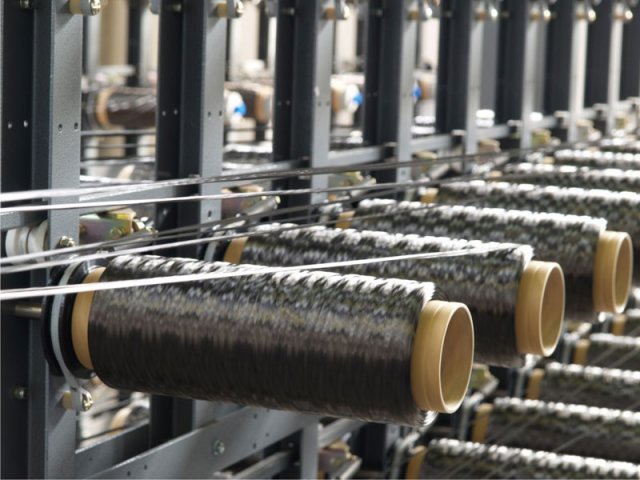Technolgy MaverX are not just another “branded mast”, the parent company Reglass are responsible for making most of the top end, high carbon percentage masts for the worlds leading brands. If anyone knows about masts it is Reglass. MaverX use exclusive carbons to get the best possible performance. Not content with “buying in” someone else’s pre preg they actually make it themselves in a highly controlled environment.
So having established that Maverx masts use the most advanced carbons available, does it really matter, can you feel the difference? In short – yes, on the MX70 the difference is in the strength compared to other masts. The MX85 is exceptionally strong yet has the response equivalent of most other brands 100% carbon masts. It’s the MX100 where you can really feel the difference. Rig your sail on a MX100 and it does alter the feel of the rig compared to any other 100% carbon mast. The sail sets the same but it will feel more lively and direct, a very similar feeling you get if you change from a standard construction board to the “pro version”, it’s the same board but it feels more “alive and responsive”. |
|
 |
The Superleggero mast uses exclusive carbons that is without doubt the most advanced wave mast in the world. |
| GENERAL CONSIDERATION BEFORE CHOOSING A MAST The mast together with the fin are "neglected" parts of your rig ( compared to boards and sails) yet maybe, more important. They can change considerably your planing , your ability to perform better or simply to have more fun on the water. It is a sensible thing trying to improve your mast or fin in your rig before discarding your board/sail or simpler to get the most out of them. . As hard it might sound to swallow, an old sail with a good mast will always perform better than a good sail with a poor mast. Coming to the consideration to improve your sailing by selecting a better mast for your sail is a "windsurfing mature" thing to do, probably it comes after few years of this sport and a real passion to move ahead in your skills. Therefore if you are reading this, you might have already completed that process. It doesn't matter if you choose a MaverX mast or not, of course we are happy if you do so, but always think to invest an even part of your budget to partner your nice looking sail. RIGGING. COMPATIBILITY. When coming to decision to get a different mast for your sail, the question popping up is always the same: will a MaverX mast be compatible with my sail?. There are two major things to consider. 1) Rigging 2) Performance, the first depending on the mast curve, the latter to the material and construction the mast it's made of. The rigging question sounds complicated but it is not. Every sail manufacturer claims to have a different luff and a different curve, true yet they are almost quite close together in the range and therefore in the mast requirement (bending curve ranges today from 10 to 14 i.e from so called hard top to flex top). All MaverX masts have a curve right in the middle (12/13= constant curve) where the majority of brands sit. This curve, together with a precise IMCS value, perfectly match with almost all sails in the market today. Using a Constant curve masts on the extreme of the range will not cause any problem, just a different setting. Use your vision to rig your sail, do not get fixated by reading the numbers and trying to match them exactly because this won't work in many cases with the original mast as well. Every year we send our masts to testers and importers to check the compatibility and get feedbacks. PERFORMANCE Let's start by saying that all masts are made today of carbon, but not all the carbon is the same. There is, as for most things we buy, great, good and poor material. A mast made of poor material weather 100% or 80% of carbon content will always perform cheap. At MaverX we select the best raw material ( Japanese production) the same that we also use for automotive and aerospace. The reflex we get from our masts i.e. the ability to respond to the forces that flex it in the shortest possible time reshaping the sail, is our major strength. Unfortunately this can be assessed only ON WATER. Try them, test them and you will be amazed. |
|
MaverX International Warranty
General Warranty Every MaverX product is carefully inspected prior to delivery and is covered by a 12 months Warranty from the purchase date for production defects. In order for Warranty to be considered valid, it will be necessary to certify the date and place of purchase together with the product description (type and model). In any case, Warranty can be curtailed should the defect be claimed over 2 months from the cause. EXTENDED warranty in Surfing conditions for RDM masts. The RDM masts will be covered by warranty (1 year) if breakage occurs in surfing conditions i.e. in between waves or shore break. This exclude of course breakage due to impact with rocks or sand or after a wrong rotation landed with the top of the mast but only due to the action and force of the sea. Any breakage occurring in a zone from the tip of the mast on the top section to 1,5 meter below it, is certainly due to an impact and warranty cannot be claimed. |
 |
FAQ 1) Using a mast from a different brand of the sail could lower the sail perfomances? It depends on the quality of the mast. The sail is designed around the mast and although for obvious reasons sail manufacturers declare that only the original mast works properly being engineered around the relevant sail curve, it has to be said that the curve it is one among many aspects to be considered. Today the majority of modern sails can be fitted with constant curve masts (i.e. a gradual and homogeneous curve along the mast length) and almost all new generation masts match very well to the different sail designs; the difference it is all placed among the quality of the carbon fibre chosen and the precise control of the process that allow for the creation of a mast with a superior dynamic response (reflex). 2) What is the reflex? It is one of the most important characteristic of a mast and it mostly depends on the carbon fibre selection, on the percentage of its mixture with glass fibre and on the final design. You can describe it as the ability that the mast has to bring back to the original shape a sail deformed by the wind in the quickest possible way that is to say a sail ready to exploit every next wind impulse. 3) A mast with huge reflex is the best choice then? Reflex alike the curve represents one among many of the factors the make a mast better than another. In fact, too much reflex could generate a very difficult mast to handle. The shape, the stiffness, its structure must create a very reactive element yet soft i.e. easy to handle while surfing. This translates into better power handling or less rider fatigue. These are fundamental aspects that make the difference in performance and price of all masts available on the market. Not only the curve, not only the reflex but the perfect blend of all design factors and of the carbon fibre selection. If a given sail is built around its “original” 100% carbon mast but is using lower carbon fibre quality, it will have its efficiency reduced compared to a 70% carbon MaverX Mast that only has the best possible carbon fibres and maniacally optimizes the design between reflex, stiffness and strength. 4) How can I know my sail will have a perfect profile using a MaverX Mast? We keep on testing our masts all year long handling them over to our testers and athletes that use a wide range of sails from the most known and spread brands. To proof that we could talk about the results MaverX is having at an international level, we could endlessly show off our speed world record, our 1st Place on the European Freestyle Championship or more practically we ask you to go to your favourite shop and rig one of our Masts on your sail. But a good sail profile it is just the starting point. What makes our Mast a stand alone machine among all others is its dynamic response, the way it shines your sail efficiency. Unfortunately there is no better way to check this out than trying it on the water. 5) RDM or SDM for my sail? Unless the luff is specifically designed to host only RDM, you can choose RDM or SDM masts according to your preference. The best choice depends on the discipline you practise and on your experience. 6) How can I know then when to use a RDM or a SDM Mast? A RDM Mast has thicker walls and that to have the same stiffness of a bigger diameter mast; therefore it will be relatively heavier of the standard mast of same length and carbon content but for this reason it will also be less fragile. Practising wave in extreme conditions, Freeride if the catapult still is one of your favourite move or Freestyle, there is no doubt that the RDM MX range is the best possible choice you can make. If you are into Freeride/Slalom/Race and you are looking for sail stability, for immediate boost of power, a SDM mast as the new MaverX Elemento gives you a competative advantage. 7) What different feelings I will experience by using a RDM instead of a SDM? A RDM Mast leaves more luff “available tissues” and therefore the feeling is more that of a spring, less “power on/off” due to the extension delay of the extra luff under wind gusts. In strong windy conditions, this is a factor your arms can appreciate; this is something you can translate into more time spent on the water especially if you are a tad out of training. Furthermore the battens of sail rigged on a RDM Mast rotate much easier and this is a clear advantage for freestylers. On the contrary, a SDM mast provides a more stable and precise profile to the sail that will be more reactive, quicker on planing and faster. These are advantages mostly searched by athletes into Freeride, Slalom and/or Race or in light wind conditions. In this case the feeling is more direct and the sail response more immediate. 8) What does it indicate the carbon percentage? The carbon percentage describes the ratio between the carbon fibre and the glass fibre contained in a mast. The higher the carbon percentage the lighter the mast and bigger its ability to excel your sail efficiency due to its superior dynamic characteristics. 9) What percentage shall I have to use? What the difference among the various percentages around? In the market you have options ranging between 30% and 100% masts and among them different carbon qualities. A 100% carbon mast anyhow may not represent the most obvious choice: in overpowered conditions may be topped with a nice swell, for the non professional surfer a lower carbon content mast like our MX70 or MX85 might be more enjoyable. They guarantee for sure a less nervous surfing in difficult conditions per se and - being RDM - a safer choice between waves since they are more robust. Furthermore the whole Stilo series is guaranteed against breakage in surfing conditions. The MX100 with its 100% carbon content represents the no compromise choice, awesome feelings that in extreme conditions wants to be “tamed”. 10) I am a beginner; can I be satisfied with a 30% carbon mast? We think you shouldn’t. In a way beginners that are in constant contact with the rig (uphauling, recovering, water starts) or girls for which the weight is not a negligible factor, would be absolutely pleased by a lighter, easier to handle mast. Think how true this is: in many cases a heavy rig is the negative key for letting windsurfing down. A mast with a carbon content lower than 50% has on its side just the price and this does not compensate the cons of its weight and very low performances. Remember that a good sail rigged on a bad mast will always be less performing than a top quality mast fit in a very bad sail. None can deny that. 11) How much does a MaverX warranty last? MaverX masts are guaranteed 1 year from the purchasing date against manufacturing defects and if broken under normal use.the warranty is extended even if the breakage occurs in surf conditions!!! (in waves). For a complete copy of the warranty, please check SupportX/Warranty and check how to ask for replacement and verify if the product is eligible for a warranty replacement. Material defects especially in carbon composites become evident during the initial period of continuous use. Breakages occurring after this initial period are unlikely to be associated with either a material or manufacturing defects. Usually the cause of successive breakages can be attributed to solicitation other than material or manufacturing defects. However, in all cases, Warranty will be at the discretion of the Manufacturer.
|
|
sailrepair.co.uk e-mail - info@maverx.co.uk Sailrepair, The Briars, Station Road, Rhu, Argyll, G84 8LW..... tel - 01436 820948 or 07881 581618 |

